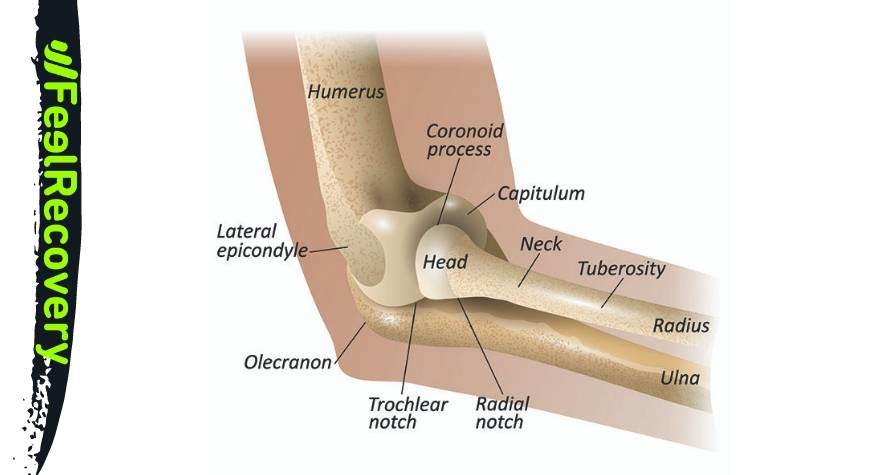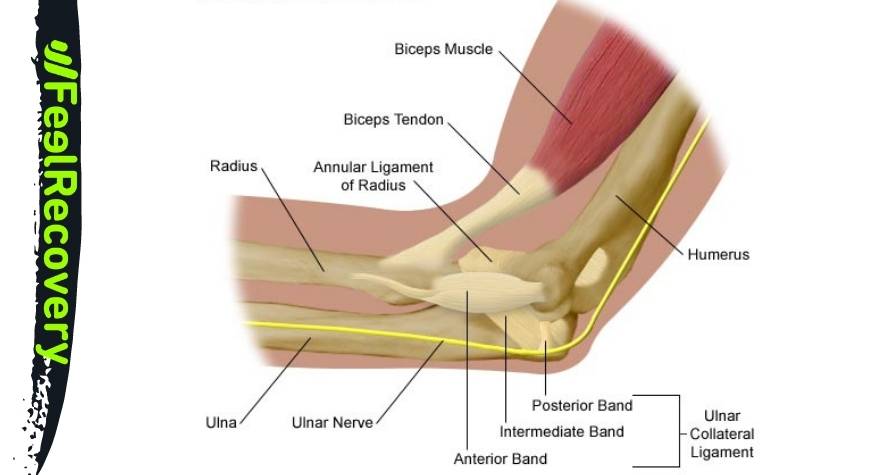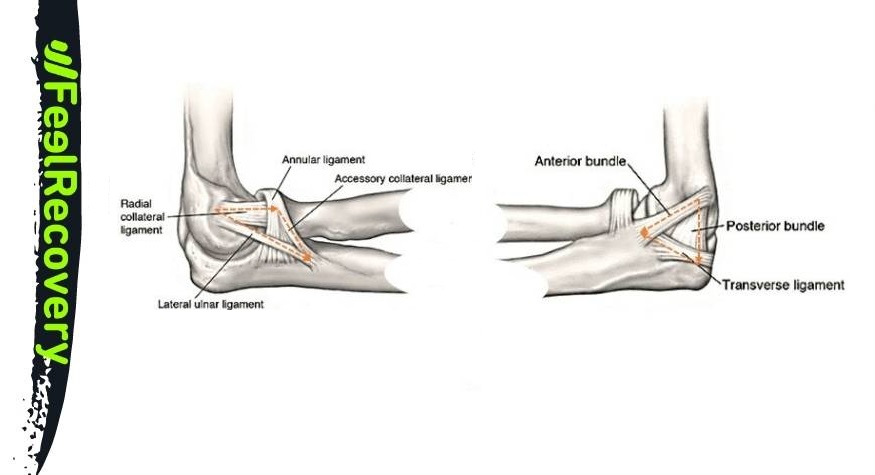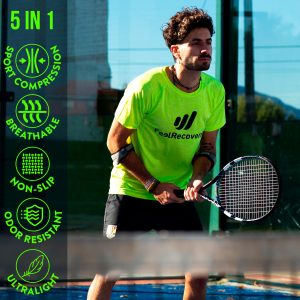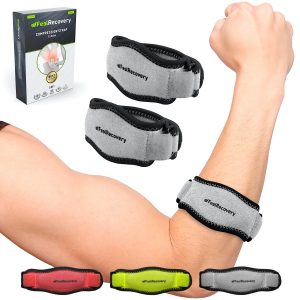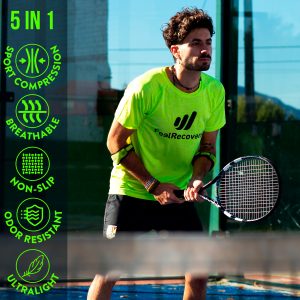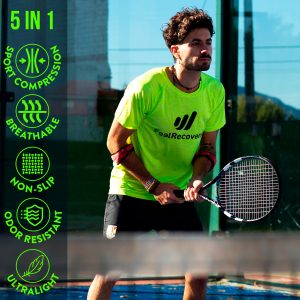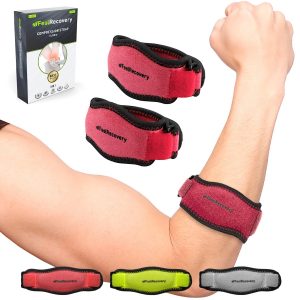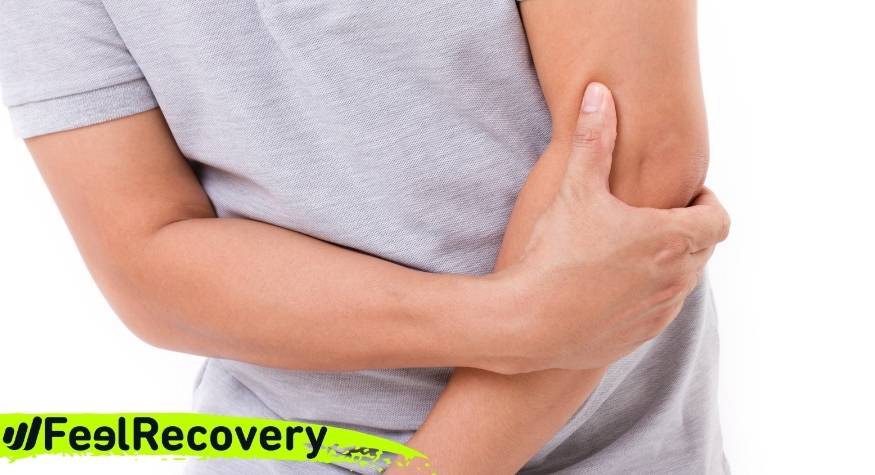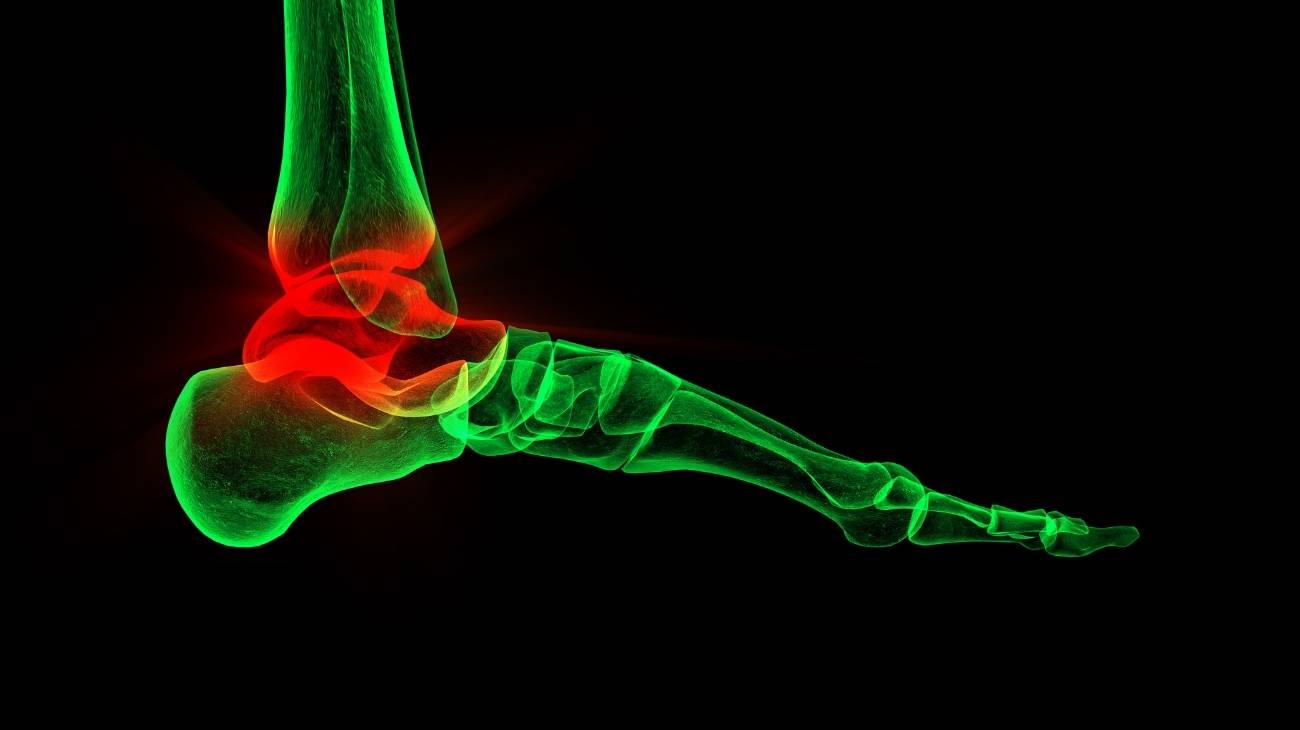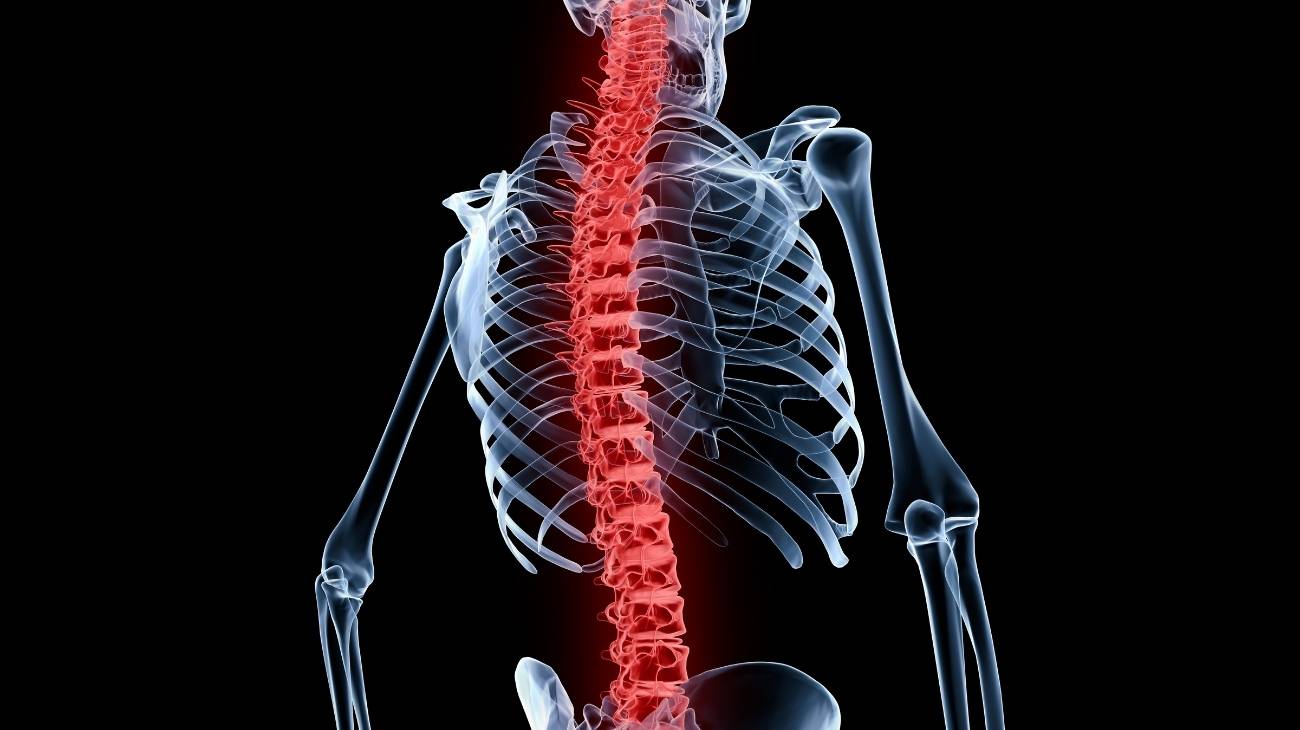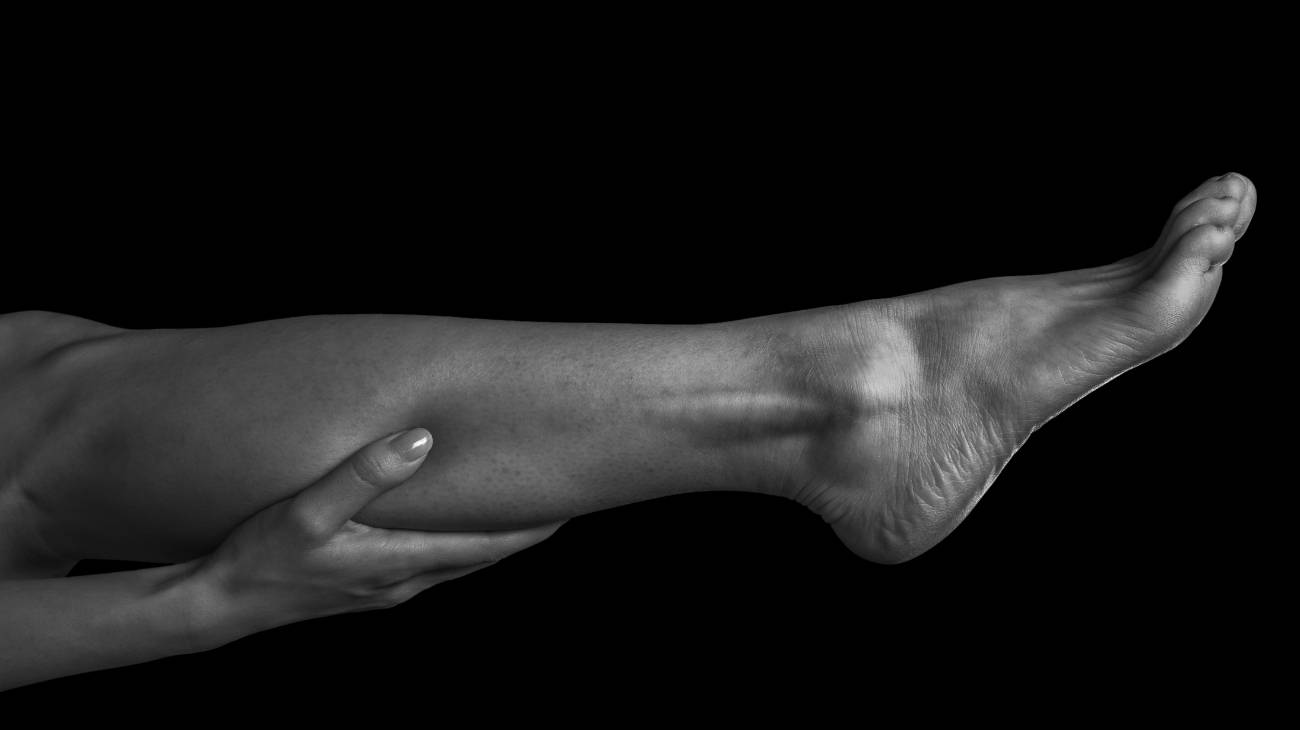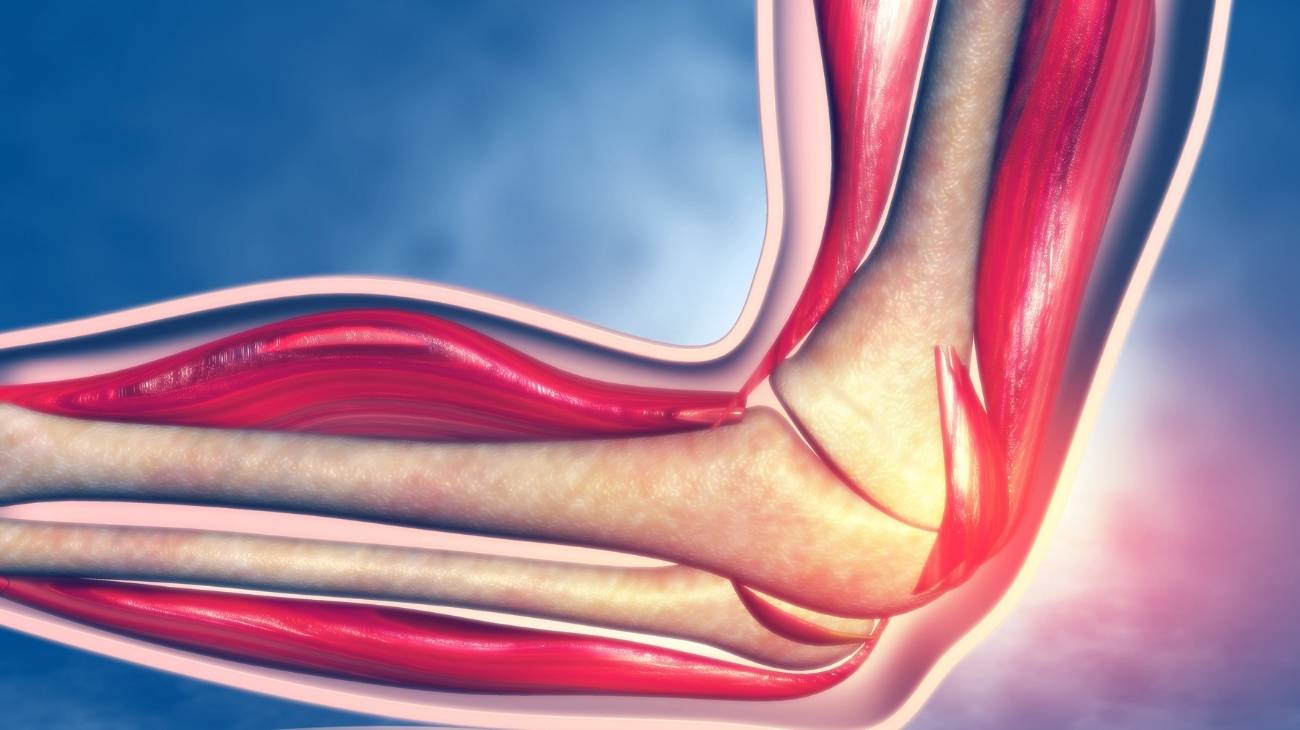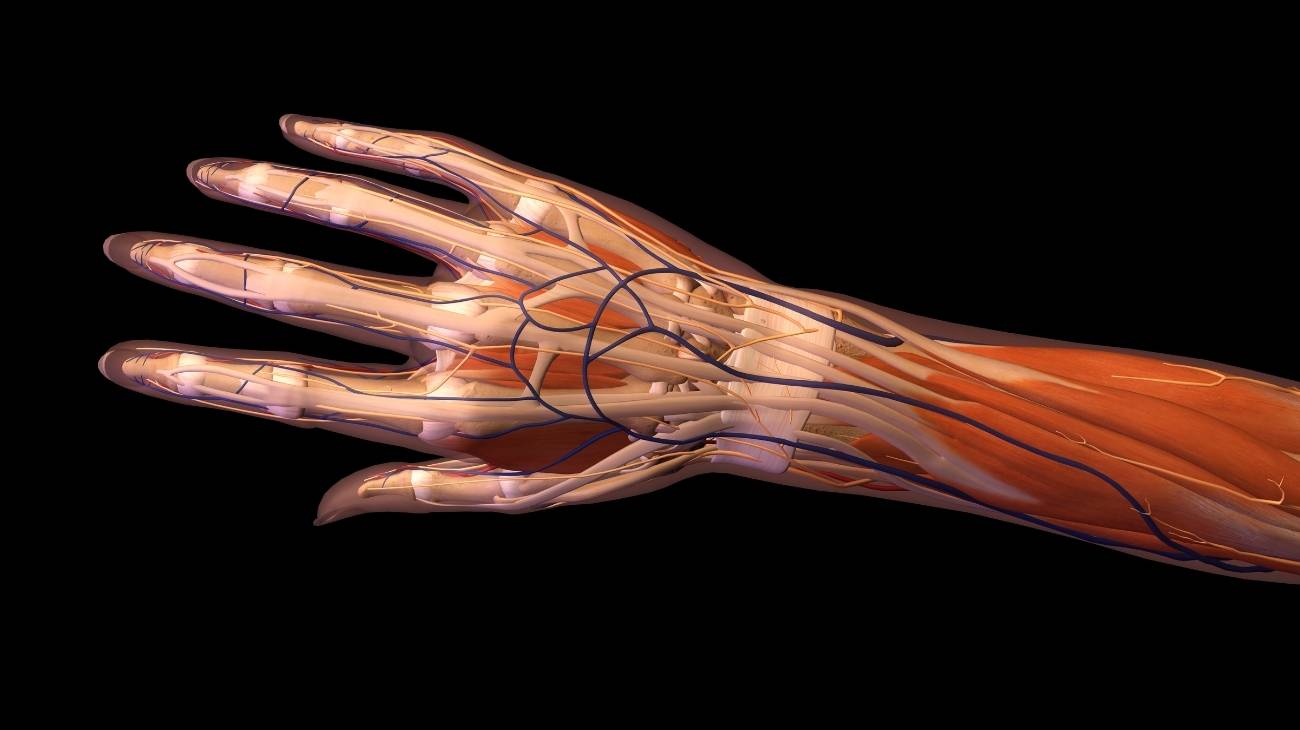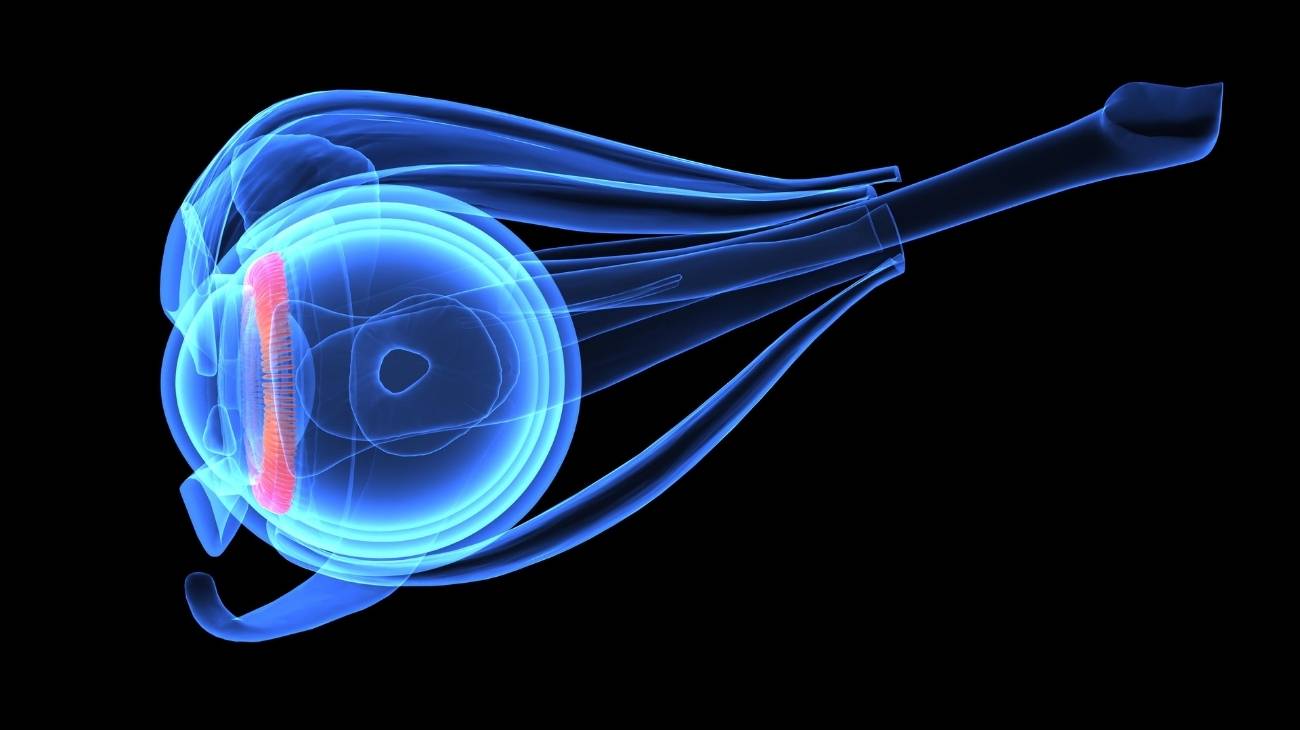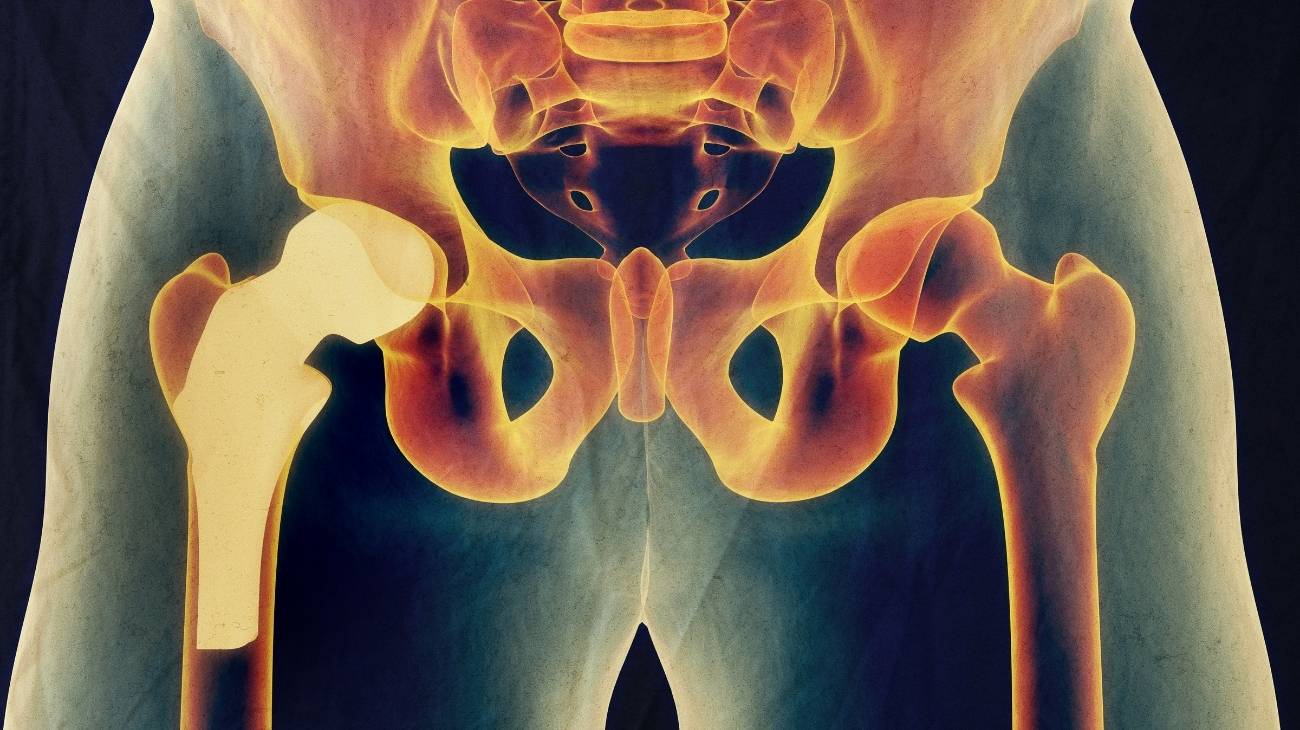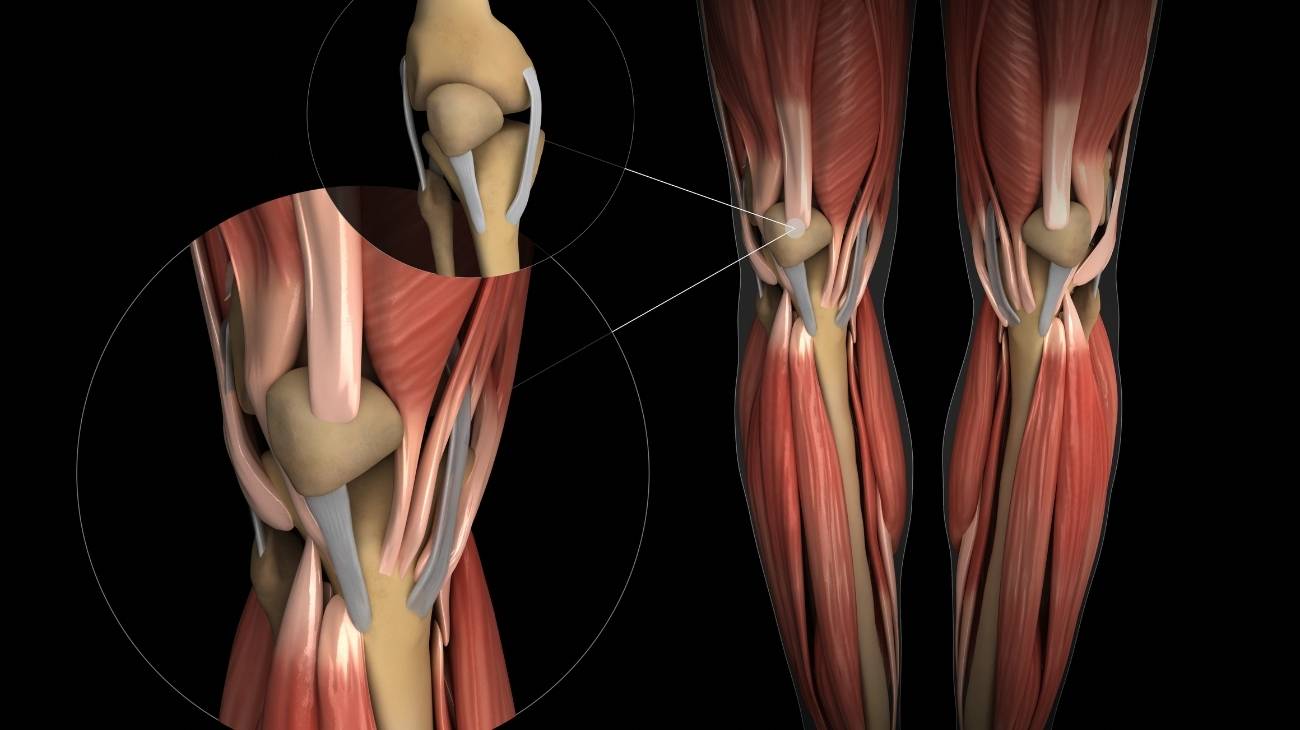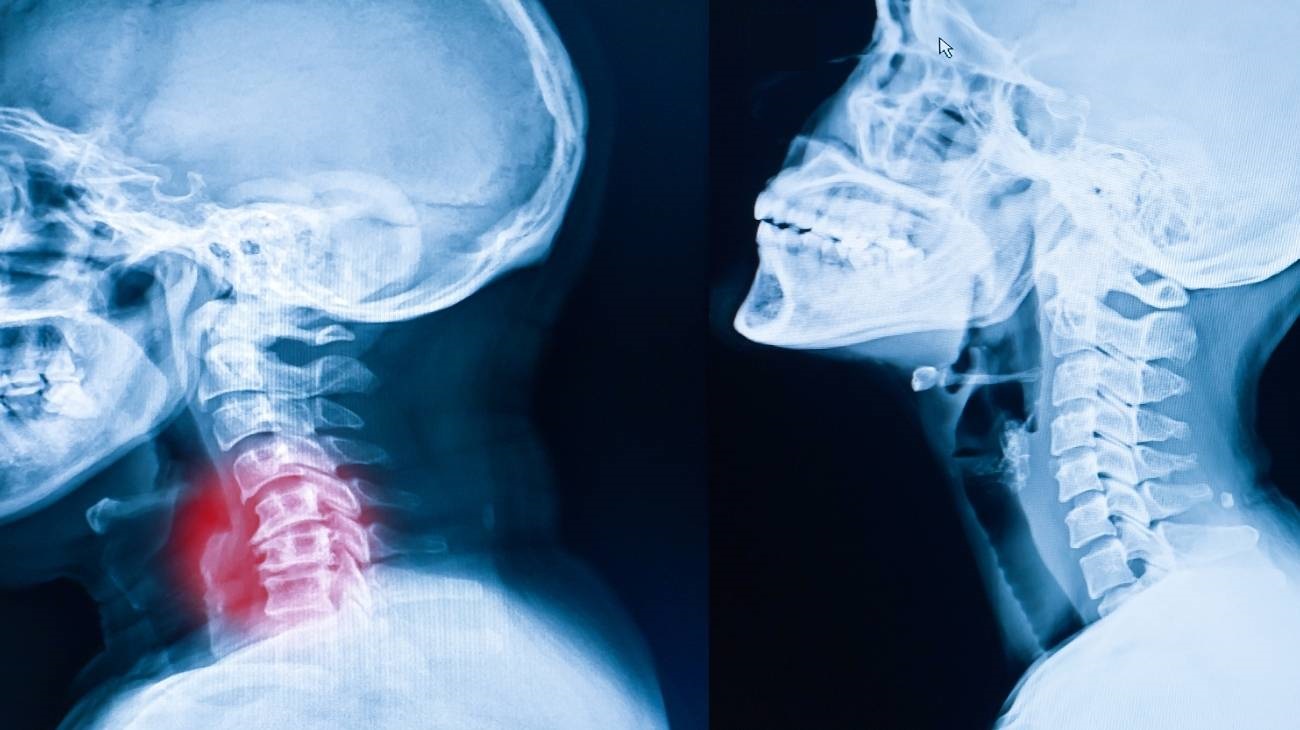The parts that make up the anatomy of the elbow are important for linking the shoulder, arm and wrist joints. This helps the human being to perform different biomechanical movements thanks to the action of the muscles, ligaments, bones and joints of the elbow.
Read on to learn about the most common elbow injuries, taking into account diseases and sporting activities. We'll also discuss current treatments and complementary therapies for elbow pain. Finally, we'll introduce you to the best articles to help you combat these ailments.
Parts and anatomy of the elbow
The anatomy of the elbow is composed as follows:
Bones and joints
The elbow is a joint body in which different bones converge, which are mentioned below
- Humerus: The upper part is connected to the scapula through the glenohumeral joint. It is an elongated bone that can be divided into several areas, with the supracondylar crest, coronoid fossa, epicondyle, radial fossa, condyle and trochlea being the areas related to the elbow. The protruding and visible bone that we all call the elbow is the epicondyle.
- Radius: This bone is located on the outside of the forearm and runs parallel to the ulna, it is also elongated and somewhat curved. It connects through its head to the epicondyle of the humerus to form the elbow.
- Ulna: The head of this bone or olecranon connects with the epitrochlea, trochlea and olecranial cavity of the humerus. At the other end of this elongated tissue is the wrist.
The joints found in the elbow are easy to develop due to the movements that this anatomical part has.
The most important articular bodies of the elbow are shown below:
- Humerocubital: Connects the ulna via the olecranon and trichoid process to the trochlea of the humerus and its olecranial and coronoid fossae. This enables extension and flexion of the elbow.
- Humeroradial: This joint connects the condyle of the humerus to the head of the radius so that the elbow can perform flexion and extension movements.
- Proximal radioulnar: This is a trochlear type joint and connects the radial notch of the ulnar bone to the radial head of the radius through its joint circumference.
Muscles
The muscles that can be found in the elbow are
- Biceps brachii: It arises from the coracoid process of the scapula and inserts into the tuberosity of the radius bone. The action of this muscle causes flexion, abduction, rotation and articulation of the shoulder as a whole.
- Triceps brachii: Located on the back of the arm from the tuberosity of the scapula and from the top of the humerus to the olecranon. Its main functions include adduction and extension of the forearm.
- Brachialis: This muscle arises from the middle of the humerus and inserts on the coronoid process and tuberosity of the ulna. Its function is to flex the elbow.
- Supinator longus: Also known as brachioradialis. The flexion of the elbow is produced by the action of this muscle, which is located in the humerus (in the supracondylar part) and is inserted in the lateral end of the radius bone.
- Supinator brevis: The work performed by this tissue is to rotate the radius to provoke elbow movements. It originates in the ulna and in the lower area of the humerus, in the lateral epicondyle.
- Pronator teres: This muscle originates from the medial epicondyle, the supracondylar crest and the coronoid process of the ulna. Its action is related to elbow flexion and pronation of the forearm.
- Pronator quadratus: It arises from the ulna and inserts on the radius, precisely in the distal quarter. The work performed by this tissue is pronation of the forearm.
- Anconee: The extension of the forearm is carried out by the action of this muscle, which is born in the lateral epicondyle of the humerus bone and inserts in the superior process of the ulna.
- Posterior ulnar: It is related to the extinction of the ulna at the wrist. It arises from the epicondyle of the ulna and ends at the fifth metacarpal of the little finger.
- Finger extensors: Some of these muscles arise from the elbow area and their job is to extend and contract the phalanges and metacarpals of the fingers.
Ligaments
The ligaments of the elbow are as follows:
- Annular ligament: It is located at the top of the radius below the epicondyle and condyle of the humerus. Its task is to strengthen the joint so that the head of the radial bone remains within the greater sigmoid cavity.
- Square: The ligament runs from the radial head to the trochlear notch of the ulna. This allows supination and pronation movements of the joint.
- Posterior: This is a thin ligament that works for the stability of the elbow. It has transverse and vertical fibres, which are used to restrict joint movements.
- Anterior: It is possible to distinguish in this ligament three types of fibres that help cover the cuff of the humerus to limit the movements of the elbow.
- External lateral: This is a less resistant tissue than the fibres of the internal lateral. Its action is to help the annular ligament to help elbow movements occur.
- Internal lateral: It is possible to divide this ligament into posterior, medial and anterior. This is due to its anatomical arrangement within the elbow to reinforce the epitrochlear area and stabilise movements.
Best Products for elbow and arm pain relief
Bestseller
-
2 Elbow Compression Sleeve (Black/Gray)
$19.95 -
2 Elbow Compression Sleeve (Green/Navy)
$19.95 -
2 Elbow Compression Sleeve (Pink/Bordeaux)
$19.95 -
2 Tennis Elbow Brace (Black/Gray)
$14.95 -
2 Tennis Elbow Brace (Green/Navy)
$14.95 -
2 Tennis Elbow Brace (Pink/Bordeaux)
$14.95 -
Acupressure Mat and Pillow (Black/Gray)
$49.95 -
Acupressure Mat and Pillow (Green/Navy)
$49.95 -
Acupressure Mat and Pillow (Pink/Bordeaux)
$49.95
Biomechanics of the elbow
Biomechanics is the study of the movements performed by the body taking into account the energy consumed and the results obtained through these actions.
Within the elbow it is possible to distinguish different movements, which are:
- Flexion: This consists of extending the arm to 90° and directing the hand backwards until it touches the ear. The maximum amplitude of this movement is 170° and works the biceps brachii, brachioradialis and brachialis muscles.
- Extension: This is the reverse of flexion. It involves bringing the hand next to the head up to shoulder height at an angle of 90°, taking the trunk as the axis. The triceps brachii, anconeus and brachialis are the muscular structures that act in this biomechanical movement.
- Supination: This action consists of turning the palm of the hand upwards. The muscles responsible for this movement are the biceps brachii and the supinator brevis. The angle of rotation can be between 75 and 90°.
- Pronation: This is the opposite movement to supination. It involves placing the palm of the hand in the direction of the ground and can have an amplitude of between 75 and 90°. The muscles related to this movement are pronator quadratus and pronator teres.
- Neutral: This is an intermediate movement between pronation and supination. That is, the hand is placed with the palm facing inwards towards the body, with the thumb facing upwards.
Most common elbow injuries
The elbow can suffer different types of injuries, which we will analyse below.
Types of elbow injuries
The most common contusions or diseases that occur in the elbow are:
- Arthritis in the elbow: Whether it is due to the patient's advanced age, trauma or insufficient immune cells, it is possible that the bones and cartilage located in the joint wear out. This causes pain and stiffness in the joint, due to the lack of slack in the synovial capsule.
- Elbow tendonitis: This is one of the most common elbow injuries and is caused by inflammation of the tendons that run through this area of the body. This can be caused by sudden, repetitive movements or lack of warming up beforehand.
- Elbow bursitis: If there is inflammation in the bursae located in the elbow due to excess synovial fluid, it is called elbow bursitis. These bursae have the task of cushioning the friction between the bones and cartilage. This causes inflammation and acute pain when they function incorrectly.
- Elbow sprain: A sprain occurs when the ligaments in the elbow are stretched or torn beyond the microscopic level. This injury causes bruising, redness in the area and pain when trying to move the elbow.
- Elbow dislocation: Is an injury sustained when one or more of the joints at the elbow (humero-ulnar, humeroradial and radioulnar) slip between the end of the humerus bone and the head of the radius and ulna. This type of separation can be classified as a posterior, anterior, lateral, medial or divergent elbow dislocation.
Sports injuries to the elbow
Athletes are exposed to elbow injuries due to the activity they perform. We will show you below which are the most common sports injuries:
- Elbow injuries in golf: The repetitive and demanding movements involved in the impacts in this sport cause tendinopathies and bursitis. Although most commonly found is inflammation of the epitrochlear muscles of the forearm, this injury is usually called "golfer's elbow" or epitrochleitis.
- Elbow injuries in weightlifting: Bursitis, sprain and tendonitis are two common injuries that occur due to excessive strain on the elbows when lifting heavy objects. It is also possible to find athletes with muscle contractures and elbow dislocations.
- Tennis elbow injuries: Tennis elbow or lateral epicondylitis is one of the most common diseases suffered by these athletes. It involves inflammation in the extensor tendons that arise from the lateral epicondyle. On the other hand, biceps contracture, bursitis and fracture of the epicondyle (due to falls) can also appear in this sport.
Elbow ailments and diseases
In addition to the ailments mentioned above, it is possible to find other diseases of the elbow. These are
Gout
The accumulation of microcrystals due to excess uric acid in the body causes severe pain in the elbow. This leads to immobilisation of the joint and in some cases to redness and inflammation.
Dislocations
Dislocation can occur when one of the three bones in the elbow slips out of place. While this is not common due to the anatomy of the humerus, radius and ulna, it is possible to find these injuries when the person falls with the hand outstretched and resting the wrist first.
Osteomalacia
Osteomalacia is a disease caused by a lack of vitamin D, which leads to muscle and bone weakness. This leads to fractures in the bones of the elbow and lack of mobility in the joint opening.
Crystal bones
Also known as osteogenesis imperfecta. This condition causes great weakness in the bones causing the elbow to not work properly and increases the likelihood of breakage.
How can we relieve elbow pain through complementary and non-invasive therapies?
Check out these non-invasive therapies to help reduce elbow pain:
Heat and cold therapy
This is one of the most commonly applied therapies for elbow pain due to its high effectiveness and ease of use. It should be noted that the implementation of non-invasive hot and cold therapy must be prescribed by a doctor in order to use cold gel packs with compression bands. Ice packs and microwavable heat packs can also be used to help achieve anti-inflammatory benefits.
Compression therapy
This non-invasive treatment aims to improve elbow motion by resting the joint. Compression garments are used for this purpose, including elbow braces, compression sleeves and elastic bandages. In this way, the patient keeps the bursae, muscles, tendons and ligaments stiff with just the right amount of pressure so that the disease goes into remission as quickly as possible.
Massage therapy
By means of self-massage with a massage gun, with a cushion or with an electric massager it is possible to improve the blood circulation in the triceps brachii, supinators and pronators. This will help to reduce inflammation and pain in these muscles and in tendons and ligaments. Joint movement is improved with this treatment, but it is necessary to consult a doctor before starting this therapy.
Acupressure therapy
By constant pressure on different special areas of the body, it is possible to reduce pain and swelling in the elbows, which will help to improve joint mobility. To obtain these benefits it is necessary to consult a doctor before choosing this therapy or before using acupressure mats, massage balls or massage rollers (with these objects it is possible to apply acupressure personally).
Thermotherapy
The elbows are a difficult area to rehabilitate due to their biomechanical function. For this reason, thermotherapy is a good non-invasive alternative to improve the symptoms of pain and swelling in this area. Heat can be applied by different methods, but the most commonly used are hot and cold gel packs for elbows. It is necessary to consult a doctor before using them.
Cryotherapy
Among the most important benefits of cold is that it accelerates tissue metabolism, improves blood flow and allows much faster muscle relaxation. To obtain these benefits in the elbow, it is necessary to apply thermal pillows or pads with special gels or sprays that help to generate the optimum internal temperature in the tissue fibres to the affected area. It is important to consult a doctor before using cryotherapy.
Electrical muscle stimulation (EMS)
Muscle electrostimulation, or EMS, is a therapy that consists of stimulating muscle contractions through the use of electricity, so as to achieve an effect of activity and hypertrophy as in the gym, but without the need to go to any sports center. This means that you can put your muscles to work without leaving home.
Electrotherapy
This is a technique that seeks relief from pain and some physical ailments through the application of electrical and electromagnetic energy, among other variants, through the skin with the use of conductive pads called electrodes. It is a very safe type of therapy and must be applied by a physical therapist specialized in the manipulation of electricity to treat some kinds of ailments.
Myofascial release therapy
Also known as myofascial induction, this therapy consists of the application of manual massage to treat the shortening and tension generated in the myofascial tissue that connects the muscles to the bones and nerves. For this purpose, various massage techniques are used that focus on the so-called trigger points.
Percussion Massage Therapy
Vibration or percussion massages are precise, rhythmic and energetic strokes on the body to achieve relief from some annoying symptoms when muscle fibers are tightened, often by a high workload on them and that has left trigger points in the muscle fibers.
R.I.C.E Therapy
The R.I.C.E. therapy is the first and simplest of the treatment protocols for minor injuries. It appears in the sports field to deal with accidents involving acute injuries. For many years, it has been considered the most suitable for its speed and results.
Trigger points therapy
Myofascial pain points or trigger points are knots that are created in the deeper muscle tissues, causing intense pain. The pain does not always manifest itself right in the area where the point develops, but rather this pain is referred to nearby areas that seemingly do not appear to be related. In fact, it is estimated that more than 80% of the pain they cause manifests in other parts of the body.
Other effective alternative therapies
There are other non-invasive treatments that are also effective in treating elbow pain. Here are the most important ones:
- Natural remedies using plants: The aim of this treatment is to reduce inflammation and improve mobility in the elbows through the use of natural plants. It can be applied through baths with warm water or teas, which must be supervised by a doctor. The most commonly used herbs are mint, basil and chamomile.
- Acupuncture: This oriental treatment generates general well-being in the patient by means of needles inserted in certain points of the body. This helps to improve the blood supply to the elbow and joint mobility.
- Kinesiotherapy: It is possible to perform massages and strategic movements to stimulate remission in elbow injuries. This therapy is performed by a professional, who exerts pressure and stretches the tendons and muscles to return them to their normal position.
- Aromatherapy: The aim of this complementary therapy is to provide the patient with emotional and psychological balance to cope with elbow injuries. Aromatic mixtures or essential oils are used for this purpose, which must be inhaled naturally.
References
- Alcid, J. G., Ahmad, C. S., & Lee, T. Q. (2004). Elbow anatomy and structural biomechanics. Clinics in sports medicine, 23(4), 503-517. https://www.sportsmed.theclinics.com/article/S0278-5919(04)00071-7/fulltext
- Bryce, C. D., & Armstrong, A. D. (2008). Anatomy and biomechanics of the elbow. Orthopedic Clinics of North America, 39(2), 141-154. https://www.sciencedirect.com/science/article/abs/pii/S0030589807001228
- Fornalski, S., Gupta, R., & Lee, T. Q. (2003). Anatomy and biomechanics of the elbow joint. Sports medicine and arthroscopy review, 11(1), 1-9. https://journals.lww.com/sportsmedarthro/Abstract/2003/11010/Anatomy_and_Biomechanics_of_the_Elbow_Joint.1.aspx
- MORREY, B. F., & AN, K. N. (1985). Functional anatomy of the ligaments of the elbow. Clinical Orthopaedics and Related Research (1976-2007), 201, 84-90. https://journals.lww.com/corr/abstract/1985/12000/functional_anatomy_of_the_ligaments_of_the_elbow.15.aspx
- Field, L. D., & Savoie, F. H. (1998). Common elbow injuries in sport. Sports medicine, 26(3), 193-205. https://link.springer.com/article/10.2165/00007256-199826030-00005
- Safran, M. R. (2004). Elbow injuries in athletes. Clinics in Sports Medicine, 23(4), xvii-xix. https://www.sportsmed.theclinics.com/article/S0278-5919(04)00072-9/fulltext
- Cain Jr, E. L., Dugas, J. R., Wolf, R. S., & Andrews, J. R. (2003). Elbow injuries in throwing athletes: a current concepts review. The American journal of sports medicine, 31(4), 621-635. https://journals.sagepub.com/doi/abs/10.1177/03635465030310042601
- Assendelft, W., Green, S., Buchbinder, R., Struijs, P., & Smidt, N. (2003). Tennis elbow. Bmj, 327(7410), 329. https://www.bmj.com/content/327/7410/329.short
- Green, S., Buchbinder, R., Barnsley, L., Hall, S., White, M., Smidt, N., & Assendelft, W. J. (2002). Acupuncture for lateral elbow pain. Cochrane Database of Systematic Reviews, (1). https://www.cochranelibrary.com/cdsr/doi/10.1002/14651858.CD003527/full
- Evans, P. J., Nandi, S., Maschke, S., Hoyen, H. A., & Lawton, J. N. (2009). Prevention and treatment of elbow stiffness. The Journal of hand surgery, 34(4), 769-778. https://www.sciencedirect.com/science/article/abs/pii/S0363502309001622

